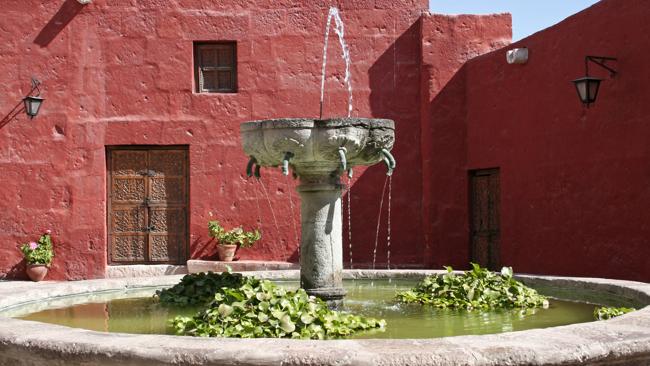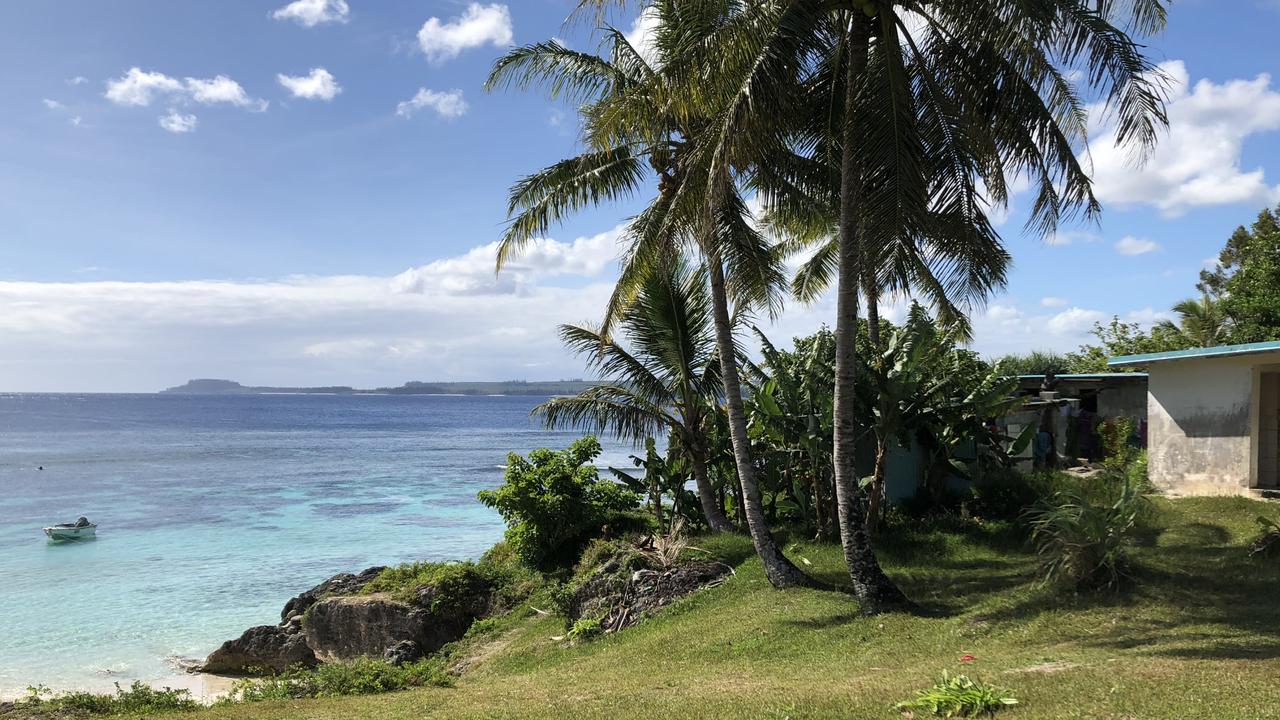Curious discoveries while perusing Peruvian convents in Arequipa
SARAH Nicholson finds that life in a convent in Arequipa in Peru was not always one of poverty and deprivation. There was more to the story.

THE life of a nun never appealed to me.
When I was little, and there were a couple of "Boston buns" knocking around my Catholic primary school, the vow of poverty was an instant deal-breaker, as I couldn't imagine giving up my yellow Walkman or my collection of Judy Blume novels. A few years later, when I discovered boys weren't just smelly creatures that wrestled on the oval at play time, there was another vow that sounded decidedly disagreeable. But on a recent trip to Peru, when I was visiting the Andean settlement of Arequipa and wandering around one of the city's oldest estates, I found an order of nuns that lived a pretty good life, unbounded by a set of medieval vows. The Monasterio de Santa Catalina, a sprawling convent of 20,000sq m established in 1579, was home to an order of religious women allowed to keep the trappings of wealth when they volunteered to serve God. In the 16th and 17th centuries the nuns came from the best Spanish and Peruvian families and, because many of the women didn't hear the call but joined the order because it was their duty, they weren't keen on sacrificing their riches for an austere cell. They moved into Santa Catalina with fine china crockery and sterling silver cutlery from home, filled their spacious apartments with expensive furniture and lace curtains, had servants to cook meals and do chores, and engaged musicians to play at regular rowdy parties. And the presence of an "orphanage"' nearby indicated they didn't take the view of chastity too seriously. A Peruvian convention at the time said rich families would give a child to the church - the first son stayed at home to continue the line, the second child served God, and if the third born was a boy he was given to the country with a commission in the military. Ancient stone steps in Arequipa Peru. Picture: SuppliedIt was around the time that the convent's population swelled to 450 residents. The complex expanded in the 17th century, occupying a whole block in the heart of Arequipa near the city's cathedral, and it was seen as such a safe place that widows with children bought their way in to live peacefully behind the high walls. Santa Catalina hasn't changed much since those days and, while there are still 25 cloistered nuns living in a quiet corner of the compound, this World Heritage treasure is now a tourist attraction where visitors can wander around the historic city-within-a-city. Visitors can stroll around the network of cobbled lanes named after Spanish settlements, peering behind the colourful internal walls into the multi-room cells occupied by each privileged entourage, and into the chapels and cloisters. Some curious stops on the tour include the Profundis Room where dead nuns were honoured before burial, and portraits painted posthumously were placed on the walls, and a cavernous hall where the ladies lived in dormitories for a few years after the Vatican came down on their idle lifestyle in the 1870s. There are more religious buildings in town worth a visit and, after turning right outside Santa Catalina's front gate, you will find the Plaza De Armas where lines of terraces with connecting balconies look over the town's main square to the cathedral. The impressive sanctuary was built from the white volcanic rocks that gave Arequipa its nickname Ciudad Blanca, or White City. The Iglesia de la Compania is another consecrated building worth seeing and, while the facade is interesting with the soft volcanic rock carved into a spray of flower-like flourishes, the real attractions are inside. The altar inside the church is a Churrigueresque-style carving covered in gold leaf that provided a stark contrast to the bare stone walls. The interior was once covered in frescoes, painted on to the thick render applied to the walls and ceiling to hide the rustic building material. However, the decoration was damaged every time the earth shook in this seismically active part of the world and was removed to spare the budget and save the congregation from injury. But the small San Ignacio Chapel in the back corner of the compound still features these vibrant patterns and those happy to pay an extra $4 can see what the whole church once looked like. There's a courtyard on one side of the church - find it by leaving through the back door near the chapel - and while this once accommodated the libraries and classrooms used by resident clergy it's now home to a collection of respected manufacturers selling clothes made from fine Andean alpaca fleece.A fountain in Arequipa. Picture Supplied There's more to Arequipa than religious buildings and Peru's second-largest city has become a culinary capital where some of the country's best chefs have opened eateries that blend traditional cuisine with modern techniques and local ingredients. After our tour of the holy structures we retreated to an upstairs table at Zig Zag Restaurant, using the wrought-iron staircase built by Gustav Eiffel to reach the room looking across the Plaza San Francisco, and feasted on a menu of Alpandino cuisine. I ordered gnocchi-like morsels made from quinoa and covered in a pesto sauce while one of my travelling companions feasted on a chunk of mountain beef served sizzling hot on a slab of volcanic stone. During dinner, our guide Helmut told us more about Ciudad Blanco. "This is the White City because the buildings that radiate from the centre of town are made from the white volcanic stone that comes from the highest mountains near here," the Arequipa local says. "The stone is a mix of ash and gas, that's what makes it so light, and while there is also a pink stone, it's the white one that's most popular because it's easy to carve." The writer was a guest of Adventure World and LAN Airlines. Go2 - Arequipa Peru's official tourism website can provide information on the southern city of Arequipa. peru.travel If you prefer visiting Arequipa on an organised tour and with an expert guide, then Adventure World has a variety of itineraries covering every corner of this captivating country including the 12-day expedition Highlights of Peru. adventureworld.com.au Liberator Arequipa is a 5-star hotel that's more like a grand colonial estate on the edge of the town's historic centre. libertador.com.pe LAN Airlines flies from Sydney to Santiago in Chile six times a week, with a short stop in Auckland, and there are regular flights that continue to Arequipa going via Lima. lan.com



